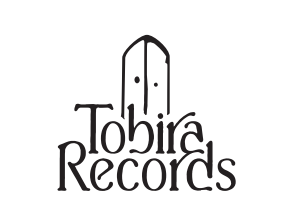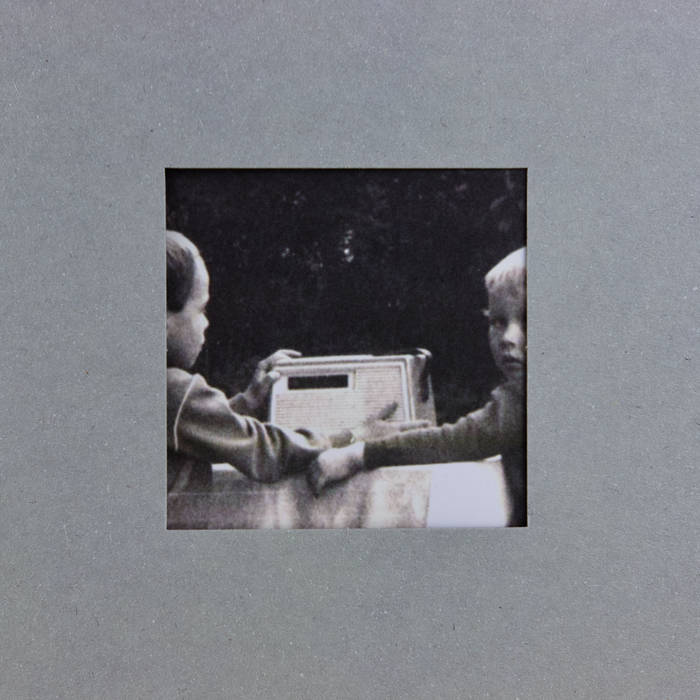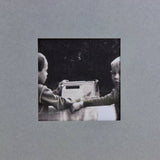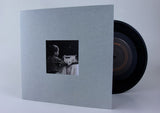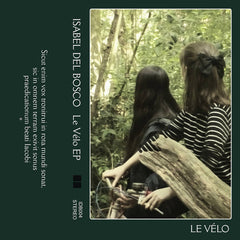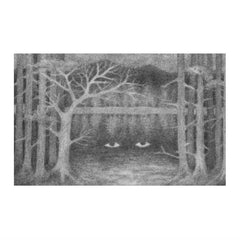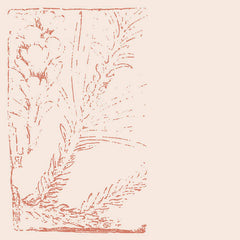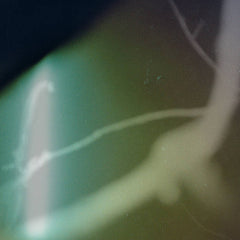Brueder Selke // QP 7 ""
- Availability:
Dutch Ambient-Folk LabelA large number of Oscarson works have arrived.
This work is 2021 "released in June 6 by the German neo-classical brother duo Brueder Selke.
Contains 3 neoclassical ambient songs. DL code included.
Labels and other worksplease use this form. ///Click here to see more Oscarson releases available at Tobira.
------------------------
Edition of 300. Includes download code.
Text by Oscarson:
"Released in a limited edition of 300 hand numbered 7 ”copy,
vinyl pressing of'QP' comes in a beautifully packed gatefold cardboard case with printed die-cut cover designed by Matthias Rehling. The 2 double-side printed covercard inserts feature 2 additional photographs by Harald Selke and Gabriele Selke the parents of the brothers made with a Zeiss Ikon and a Reflekta II and include liner notes, dedicated text and credits using 2 original fonts from the Communist-era GDR recommended by Torsten Posselt. The black inner paper sleeve comes including the download sticker with link and code to the digital version of the full EP "
*************
" The newly built prefab estates that marked this area were named with different types: The brothers Sebastian and Daniel Selke grew up during critical times – back in the 1980s when the former GDR was slowly starting to dissolve – in the far East of Berlin-Hellersdorf. Q3A, QP and QX.
From 1959 to 1983 the even more frequently built houses followed in the cross-wall panel construction method. with a lift. This is the first type of house in industrial large panel construction.
The first buildings of this series were built in Berlin between. The individual panel elements completely form a wall of a room. Most striking and visible feature of many houses in the QP series are colored tiles, mostly white or yellow, to cover the outer walls. Strausberger and Alexanderplatz, in the western half of the former Stalinallee and also in the Hans Loch quarter.
After the Q3A EP, this is the second part from a planned trilogy. With “Fuer Daniel” (to Daniel), the A-side marks Sebastian's second solo piece to be released under his own name. This time he plays his felt-prepared upright piano manufactured by Alexander Herrmann and VEB Deutsche Piano --Union Leipzig. The repeats of a left and right panned ping-pong delay run through a sequenced analogue filter. For the first time you will also notice 2 violins, a viola and even Sebastian's Klingenthal cello.
But here all sounds come from the virtual instrument once created by Ólafur Arnalds. Its samples are based on recordings from Viktor Orri Árnason and Sebastian.
Daniel, on the B-side, is playing his restored childhood upright made by Steck, a brand name of the Aeolian Piano company that was used on player pianos produced in the early twentieth century. A large number of Steck pianos were produced in Gotha, Germany.The factory named Gothaer Piano- Hofmanufaktur was purchased in 1905 from Ernst Munck and renamed Steck in 1906. In his solo piece “Dear Sebastian”, he combines it with sampled percussive piano noises that build a subtle rhythm.
The simple but intense tonality of Sebastian's emerging figures and string textures merge with Daniel's seemingly observant conversation between melody and noises. Like in part one, Q3A, this ultimately allows for a dialogue between their childhood pianos, coming together in a volute to reveal something utterly moving and beautiful – the hidden piece, QP, is revealed when the two tracks are layered. In addition this third track is released under the brother's new sigil: Brueder Selke.
QP is a further project to be recorded live at their very own Klingenthal Studio in Potsdam. The record was given into the gifted hands of Edward Sikorski, who mixed and mastered the record at his boutique Studio B in Dresden. "
Artist: Brueder Selke
Label: Oscarson
Dutch Ambient-Folk LabelA large number of Oscarson works have arrived.
This work is 2021 "released in June 6 by the German neo-classical brother duo Brueder Selke.
Contains 3 neoclassical ambient songs. DL code included.
Labels and other worksplease use this form. ///Click here to see more Oscarson releases available at Tobira.
------------------------
Edition of 300. Includes download code.
Text by Oscarson:
"Released in a limited edition of 300 hand numbered 7 ”copy,
vinyl pressing of'QP' comes in a beautifully packed gatefold cardboard case with printed die-cut cover designed by Matthias Rehling. The 2 double-side printed covercard inserts feature 2 additional photographs by Harald Selke and Gabriele Selke the parents of the brothers made with a Zeiss Ikon and a Reflekta II and include liner notes, dedicated text and credits using 2 original fonts from the Communist-era GDR recommended by Torsten Posselt. The black inner paper sleeve comes including the download sticker with link and code to the digital version of the full EP "
*************
" The newly built prefab estates that marked this area were named with different types: The brothers Sebastian and Daniel Selke grew up during critical times – back in the 1980s when the former GDR was slowly starting to dissolve – in the far East of Berlin-Hellersdorf. Q3A, QP and QX.
From 1959 to 1983 the even more frequently built houses followed in the cross-wall panel construction method. with a lift. This is the first type of house in industrial large panel construction.
The first buildings of this series were built in Berlin between. The individual panel elements completely form a wall of a room. Most striking and visible feature of many houses in the QP series are colored tiles, mostly white or yellow, to cover the outer walls. Strausberger and Alexanderplatz, in the western half of the former Stalinallee and also in the Hans Loch quarter.
After the Q3A EP, this is the second part from a planned trilogy. With “Fuer Daniel” (to Daniel), the A-side marks Sebastian's second solo piece to be released under his own name. This time he plays his felt-prepared upright piano manufactured by Alexander Herrmann and VEB Deutsche Piano --Union Leipzig. The repeats of a left and right panned ping-pong delay run through a sequenced analogue filter. For the first time you will also notice 2 violins, a viola and even Sebastian's Klingenthal cello.
But here all sounds come from the virtual instrument once created by Ólafur Arnalds. Its samples are based on recordings from Viktor Orri Árnason and Sebastian.
Daniel, on the B-side, is playing his restored childhood upright made by Steck, a brand name of the Aeolian Piano company that was used on player pianos produced in the early twentieth century. A large number of Steck pianos were produced in Gotha, Germany.The factory named Gothaer Piano- Hofmanufaktur was purchased in 1905 from Ernst Munck and renamed Steck in 1906. In his solo piece “Dear Sebastian”, he combines it with sampled percussive piano noises that build a subtle rhythm.
The simple but intense tonality of Sebastian's emerging figures and string textures merge with Daniel's seemingly observant conversation between melody and noises. Like in part one, Q3A, this ultimately allows for a dialogue between their childhood pianos, coming together in a volute to reveal something utterly moving and beautiful – the hidden piece, QP, is revealed when the two tracks are layered. In addition this third track is released under the brother's new sigil: Brueder Selke.
QP is a further project to be recorded live at their very own Klingenthal Studio in Potsdam. The record was given into the gifted hands of Edward Sikorski, who mixed and mastered the record at his boutique Studio B in Dresden. "
Artist: Brueder Selke
Label: Oscarson
